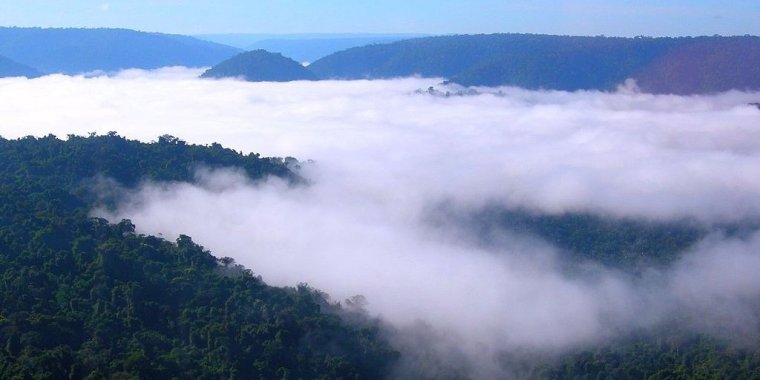| News / Science News |
New Study Shows the Amazon Makes Its Own Rainy Season
A new study gives the first observational evidence that the southern Amazon rainforest triggers its own rainy season using water vapor from plant leaves. The finding helps explain why deforestation in this region is linked with reduced rainfall.
The study analyzed water vapor data from NASA's Tropospheric Emission Spectrometer (TES) on the Aura satellite, along with other satellite measurements, to show that at the end of the dry season, clouds that build over the southern Amazon are formed from water rising from the forest itself.
It's been a mystery why the rainy season begins when it does in the Amazon south of the equator. In most tropical regions, two factors control the timing of the rainy season: monsoon winds (a seasonal change of direction in prevailing winds) and the Intertropical Convergence Zone (ITCZ), a belt of converging trade winds around the equator that shifts north or south with the seasons.
The southern Amazon experiences both of these. But they don't occur till December or January, while the rainy season currently starts in mid-October -- two or three months earlier.
Scientist Rong Fu of UCLA, a leader of the new research efforts, published a paper in 2004 suggesting that increased evaporation of water from leaves -- a process known as transpiration -- might be the cause.
Greener plants are a likely indicator of increased plant growth and transpiration, but not a definitive one. Also, color measurements can't show how much water vapor is moving from the plants to the atmosphere or whether it's rising high enough in the atmosphere to make clouds and rain.
Water vapor that evaporated into the atmosphere has less deuterium than liquid water. For example, water vapor that evaporated from the ocean has less deuterium than water that's still in the ocean.
Water that is transpired by plants, on the other hand, has the same amount of deuterium as water that's still in the ground -- the plant sucks water out of the ground like a straw, no matter which isotope the water contains. That means water vapor transpired from plants has more deuterium than water vapor evaporated from the ocean.
The measurements showed that, during the transition from dry to wet season, transpired water becomes a significant moisture source for the atmosphere, and in particular for the middle troposphere, where the increasing water vapor provides the fuel needed to start the rainy season. (NASA)
YOU MAY ALSO LIKE




